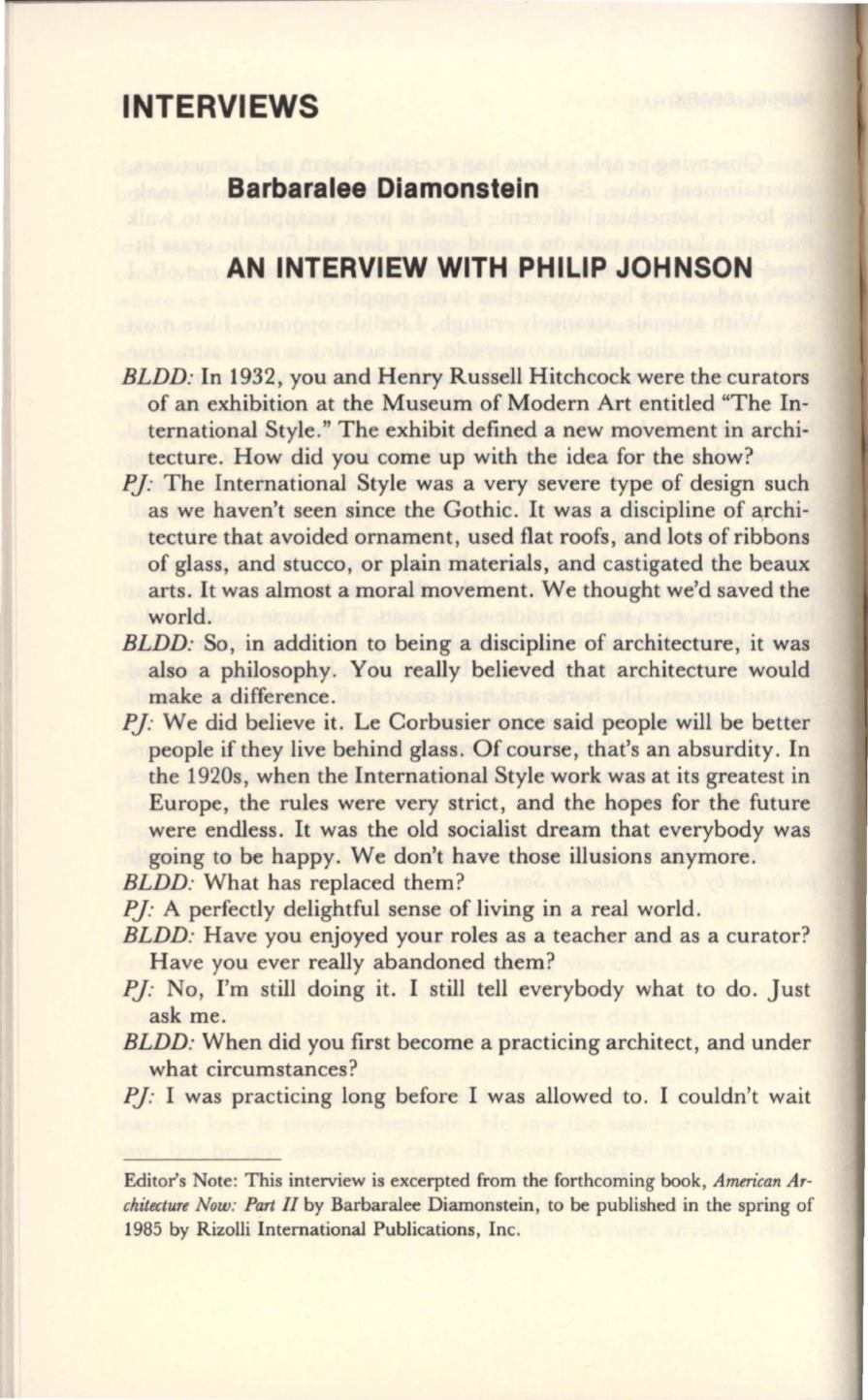
INTERVIEWS
Barbaralee Diamonstein
AN INTERVIEW WITH PHILIP JOHNSON
BLDD:
In 1932, you and Henry Russell Hitchcock were the curators
of an exhibition at the Museum of Modern Art entitled "The In–
ternational Style." The exhibit defined a new movement in archi–
tecture. How did you come up with the idea for the show?
PJ:
The International Style was a very severe type of design such
as we haven't seen since the Gothic. It was a discipline of
~rchi
tecture that avoided ornament, used flat roofs, and lots of ribbons
of glass, and stucco, or plain materials, and castigated the beaux
arts.
It
was almost a moral movement. We thought we'd saved the
world.
BLDD:
So, in addition to being a discipline of architecture, it was
also a philosophy. You really believed that architecture would
make a difference .
PJ:
We did believe it. Le Corbusier once said people will be better
people if they live behind glass . Of course, that's an absurdity . In
the 1920s, when the International Style work was at its greatest in
Europe, the rules were very strict, and the hopes for the future
were endless. It was the old socialist dream that everybody was
going to be happy. We don't have those illusions anymore.
BLDD:
What has replaced them?
PJ:
A perfectly delightful sense of living in a real world.
BLDD:
Have you enjoyed your roles as a teacher and as a curator?
Have you ever really abandoned them?
PJ:
No, I'm still doing it. I still tell everybody what to do. Just
ask me.
BLDD:
When did you first become a practicing architect, and under
what circumstances?
PJ:
I was practicing long before I was allowed to . I couldn't wait
Editor's Note: This interview is excerpted from the forthcoming book,
American Ar–
chitecture Now: Part II
by Barbaralee Diamonstein, to
be
published in the spring of
1985 by Rizolli International Publications, Inc.


